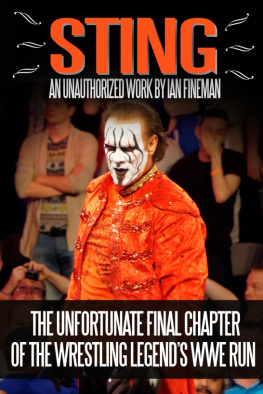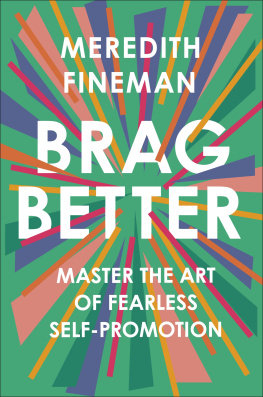Fineman Stephen - Emotion in Organizations
Here you can read online Fineman Stephen - Emotion in Organizations full text of the book (entire story) in english for free. Download pdf and epub, get meaning, cover and reviews about this ebook. year: 2000, publisher: SAGE Publications, genre: Romance novel. Description of the work, (preface) as well as reviews are available. Best literature library LitArk.com created for fans of good reading and offers a wide selection of genres:
Romance novel
Science fiction
Adventure
Detective
Science
History
Home and family
Prose
Art
Politics
Computer
Non-fiction
Religion
Business
Children
Humor
Choose a favorite category and find really read worthwhile books. Enjoy immersion in the world of imagination, feel the emotions of the characters or learn something new for yourself, make an fascinating discovery.

- Book:Emotion in Organizations
- Author:
- Publisher:SAGE Publications
- Genre:
- Year:2000
- Rating:4 / 5
- Favourites:Add to favourites
- Your mark:
- 80
- 1
- 2
- 3
- 4
- 5
Emotion in Organizations: summary, description and annotation
We offer to read an annotation, description, summary or preface (depends on what the author of the book "Emotion in Organizations" wrote himself). If you haven't found the necessary information about the book — write in the comments, we will try to find it.
Emotion in Organizations — read online for free the complete book (whole text) full work
Below is the text of the book, divided by pages. System saving the place of the last page read, allows you to conveniently read the book "Emotion in Organizations" online for free, without having to search again every time where you left off. Put a bookmark, and you can go to the page where you finished reading at any time.
Font size:
Interval:
Bookmark:
Emotion In Organizations
Emotion In Organizations
second edition
edited by
Stephen Fineman

Stephen Fineman
First published 2000
Apart from any fair dealing for the purposes of research or private study, or criticism or review, as permitted under the Copyright, Designs and Patents Act, 1988, this publication may be reproduced, stored or transmitted in any form, or by any means, only with the prior permission in writing of the publishers, or in the case of reprographic reproduction, in accordance with the terms of licences issued by the Copyright Licensing Agency. Inquiries concerning reproduction outside those terms should be sent to the publishers.
| SAGE Publications Ltd 6 Bonhill Street London EC2A 4PU SAGE Publications Inc 2455 Teller Road Thousand Oaks, California 91320 SAGE Publications India Pvt Ltd 32, M-Block Market Greater Kailash I New Delhi 110 048 |
British Library Cataloguing in Publication data
A catalogue record for this book is available from the British Library
ISBN 0 7619 6624 2
ISBN 0 7619 6625 0 (pbk)
Library of Congress catalog card number 00132715
Typeset by Keystroke, Jacaranda Lodge, Wolverhampton.
Printed in Great Britain by Redwood Books, Trowbridge, Wiltshire
CONTENTS
Stephen Fineman
Peter J. Frost, Jane E. Dutton, Monica C. Worline and Annette Wilson
Lloyd E. Sandelands and Connie J. Boudens
Vincent R. Waldron
Kathleen J. Krone and Jayne M. Morgan
Stephen Fineman
Joanne Martin, Kathy Knopoff and Christine Beckman
Varda Wasserman, Anat Rafaeli and Avraham N. Kluger
Debra E. Meyerson
Blake E. Ashforth and Marc A. Tomiuk
Michael G. Pratt and Lorna Doucet
Robert Jackall
Gillian Bendelow and Berry Mayall
Karen P. Harlos and Craig C. Pinder
CONTRIBUTORS
School of Management, University of Bath, UK
Department of Management, College of Business, Arizona State University
Graduate School of Management, University of California, Irvine
Department of Sociology, University of Warwick
Department of Psychology, University of Michigan
Department of Business Administration, University of Illinois
School of Business Administration, University of Michigan
Faculty of Commerce and Business Administration, University of British Columbia
Department of Management, University of Otago
Department of Anthropology and Sociology, Williams College
School of Business Administration, Hebrew University of Jerusalem
Director, Pacific Consulting Group
Department of Communication Studies, University of Nebraska-Lincoln
Graduate School of Business, Stanford University
Social Science Research Unit, Institute of Education, University of London
Center for Work, Technology, and Organization, Stanford University
Department of Communication, University of Northern Iowa
Faculty of Business, University of Victoria
Department of Business Administration, University of Illinois
Faculty of Industrial Engineering and Management, Technion Institute of Technology, Haifa
Department of Psychology, University of Michigan
Department of Marketing, cole des HEC, Montreal
Department of Communication Studies, Arizona State University West
School of Business Administration, The Hebrew University of Jerusalem
College of Architecture and Urban Planning, University of Michigan
Department of Organizational Psychology, University of Michigan
ACKNOWLEDGEMENTS
Rosemary Nixon at Sage provided vital support and encouragement to make this book possible. My particular thanks to her, and also to my colleagues at Bath who have kept emotion alive.
STEPHEN FINEMAN
In the first edition of Emotion in Organization (1993) I characterized organizations as emotional arenas to capture the intense activity of lived emotion in organizational life. As emotional arenas, organizations bond and divide their members. Workaday frustrations and passions boredom, envy, fear, love, anger, guilt, infatuation, embarrassment, nostalgia, anxiety are deeply woven into the way roles are enacted and learned, power is exercised, trust is held, commitment formed and decisions made. Emotions are not simply excisable from these, and many other, organizational processes; they both characterize and inform them.
This, in effect, was the key message in the first edition, a theme that, at the time, was relatively muted in the study of organizations. The book developed the point in a number of different directions emotionalizing the way meanings and order are created in organizations, the production and politics of social differences (gender, sexuality), the substance of organizational culture and change, and examining facets of emotional labour.
In looking once more into the emotional arena, what do we see? How have things developed in the intervening seven years? What might we applaud and what might we be more circumspect about? In considering these questions I do not propose a complete review of the diverse literatures on emotion and organizations interested readers may like to refer to recent overviews in Fineman (1999), Pinder (1998) and Ashkenasy et al. (2000). In this chapter I will be partial and selective; I will also preview the chapters to come.
Emotions have developed into something of a sub-discipline in the study of work and organizations. There are now emotion papers and symposia presented at major organizational and management conferences, as well as specialist web-based discussion groups. Professional associations of sociologists, both sides of the Atlantic, run forums dedicated to the study of emotions, reflecting a move towards a passionate sociology (Game and Metcalf, 1996). Applied psychologists have explored the connection between emotion and motivation (George and Brief, 1996; Pinder, 1998), the consequences of affect and mood at work (Estrada et al., 1997; Weiss and Cropanzano, 1996) and emotional contagion, the catching and passing-on of emotion (Doherty, 1998; Verbeke, 1997). Some aspects of this research have reached the popular management and psychological literature as.
Aesthetics and emotion has been another area of concern. Our work lives are mediated and shaped by material objects machines, technologies, rooms, books, walls, windows, cups, coffee machines. Indeed, some social theorists regard material objects as actors in their own right in organizational relations (for example Callon, 1987; Latour, 1991). We often invest such objects or spaces with emotional qualities, reflecting our own identities and moods my miserable computer, my happy chair, that cosy room, this depressing building, that wretched fax machine, this beautiful book, that ugly corridor. Such emotional/aesthetic experiences have been examined (for example by Gagliardi, 1999; Strati, 1999), where the aesthetic captures feelings of form or flow that are experienced from the places and objects where people work. The machines, office layout, colours, geographical setting, noise, music, task activities, food are objects of sound, sight, touch or smell that trigger feelings of rightness, discord, warmth, harshness or alienation (see ).
Next pageFont size:
Interval:
Bookmark:
Similar books «Emotion in Organizations»
Look at similar books to Emotion in Organizations. We have selected literature similar in name and meaning in the hope of providing readers with more options to find new, interesting, not yet read works.
Discussion, reviews of the book Emotion in Organizations and just readers' own opinions. Leave your comments, write what you think about the work, its meaning or the main characters. Specify what exactly you liked and what you didn't like, and why you think so.










